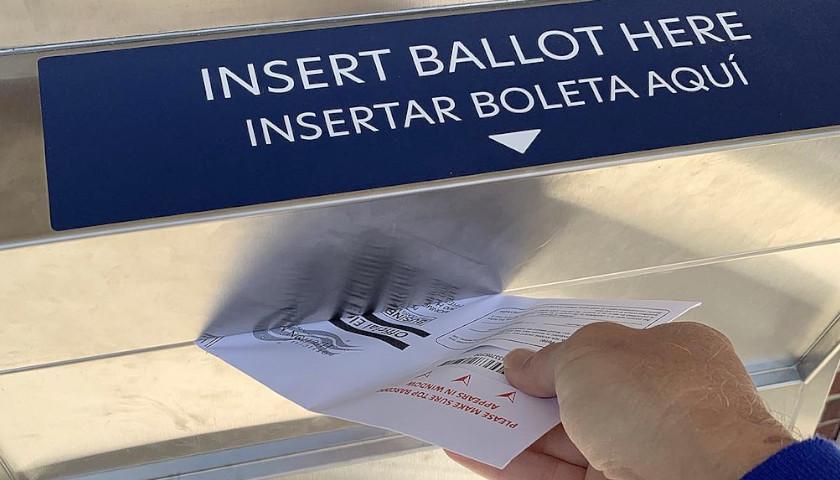Pennsylvania’s House of Representatives yesterday passed a new congressional map, though without the support of any Democrats and with indications of disapproval from Gov. Tom Wolf (D).
Two southeastern State Representatives Chris Quinn (R-Media) and Todd Stephens (R-Horsham) joined the Democrats in opposition. The plan must pass the GOP-led state Senate and receive the governor’s signature to go into effect this year.
Every 10 years, the commonwealth undertakes redistricting for both General Assembly chambers and Pennsylvania’s congressional delegation to reflect population trends reported by the U.S. Census. This year, the Keystone State will lose a congressional seat, due to sluggish population growth over the last decade.
The new congressional districts state House Republicans want to adopt results largely from the work of a private citizen, Amanda Holt of Lehigh County. The House State Government Committee selected Holt’s preliminary plan among 19 resident-submitted maps and made minor revisions. Those efforts have borne a congressional map that slightly improves Republicans’ electoral prospects, albeit one without districts nearly as sinuous as those enacted by Republican lawmakers respectively in 2011 and 2001.
Bending, irregular districts often indicate gerrymandering, a tactic whereby officials attempt to draw districts to their own political party’s advantage. In floor remarks, State Government Committee Chairman Seth Grove (R-York) celebrated the generally apparent avoidance of gerrymandering in crafting the new map, citing increased compactness of districts across the state.
Grove also touted the openness of the process conducted by his committee, noting that the panel gathered and considered 398 public comments on Holt’s map. He said the committee’s congressional reapportionment website, paredistricting.com is still available to state residents seeking to comment on the map as it works its way through the Senate and onto Wolf’s desk.
“For the first time in the history of the commonwealth, we will be voting on a citizen’s map, a map designed by a citizen on behalf of the residents of the Commonwealth of Pennsylvania for our 17 congressional districts,” Grove told House colleagues. “I’m proud of the work the committee—both Republican and Democrat members—did attending hearings all summer and into the fall to create a map that was done without partisan data.”
Commentary from Wolf so far suggests he will veto the map passed by the House. In a letter to state representatives, the governor called the plan “highly skewed.”
Yesterday, State Government Committee Minority Chair Scott Conklin (D-State College) echoed the governor’s take that the GOP-favored plan is gerrymandered.
“They just decided that, hey, this is the map we like,” Conklin said. “Was it a big hat they picked it out of? Was it a group [that] got together? I don’t know.”
Grove countered comments from across the aisle by observing that no Democratic member of the state House proposed a new congressional map nor offered an amendment to the one his chamber approved yesterday. He also mentioned that the nonpartisan Princeton Gerrymandering Project gave the House Republicans’ plan a “B” grade overall—averaging an “A” for creating competitive districts, a “B” for declining to seek partisan advantage and a “C” for maintaining advisable geographic features such as compactness. By contrast, the new plan for state House districts that was crafted by a Democrat-majority reapportionment panel won a mixed-to-negative review from the Princeton analysts and an “F” on competitiveness, with no grade overall.
The House-approved map would improve Republican prospects in two districts especially: the Scranton-based 8th, currently held by U.S. Rep. Matt Cartwright (D-PA-08), which would expand westward into the conservative counties of Bradford, Susquehanna and Wyoming; and the Pittsburgh-based 17th, currently represented by Rep. Conor Lamb (D-PA-17), which would reach into right-leaning Washington County.
In a recent decision, Pennsylvania’s Supreme Court left the door open to redesigning the congressional map itself if the governor and the legislature do not agree on newly redesigned districts soon. Some Democrats have been urging the court to do so already as it did in 2018 in response to a lawsuit alleging that the 2011 map unfairly advantaged Republicans. The map enjoined by the majority-Democrat court itself swung the electoral advantage sharply toward the Democrats.
– – –
Bradley Vasoli is managing editor of The Pennsylvania Daily Star. Follow Brad on Twitter at @BVasoli. Email tips to [email protected].
Photo “Tom Wolf” by Governor Tom Wolf. CC BY 2.0. Background Photo “Pennsylvania State Capitol” by Governor Tom Wolf. CC BY 2.0.





